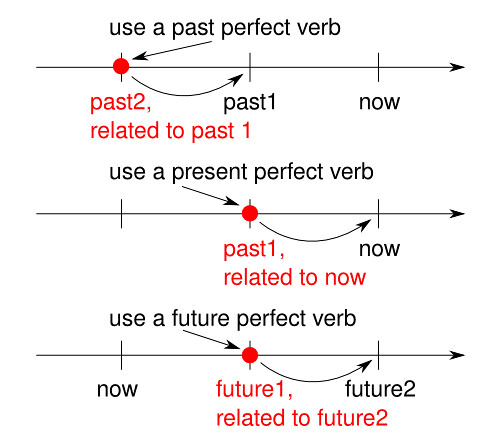
Here's the updated picture from yesterday. Notice how the relationship between one time and a time after it is the same in every case.
That's why past perfect tense is called "past perfect": it's related to some point in the past. Present perfect is related to now. Future perfect is related to some time in the future.
If you can understand this point, then all of the perfect tenses become easier to use, not just past perfect.
You were supposed to add something to yesterday's diagram. I hope you have done it.
I finished this diagram a few minutes ago. I did that because I had told you I would do so. Check your diagram with this one.
I also asked you about these sentences in yesterday's post:
I took my rain suit with me because I had expected it to rain. <- take, past1; expect, past2Today I tried a new Indian restaurant. I hadn't been there before. The vegetable curry was nice, but somehow I missed the Nepalese guy at the other restaurant who always tells me things like "today too much hot".
I haven't figured out how to make my backpack lighter. <- figure out, past1, related to now
× Today too much hot.By the time this series is over, you will have improved your understanding of perfect tenses. More tomorrow!
○ It's too hot today (to go out).
○ It's really hot today. <- more natural

0 件のコメント:
コメントを投稿